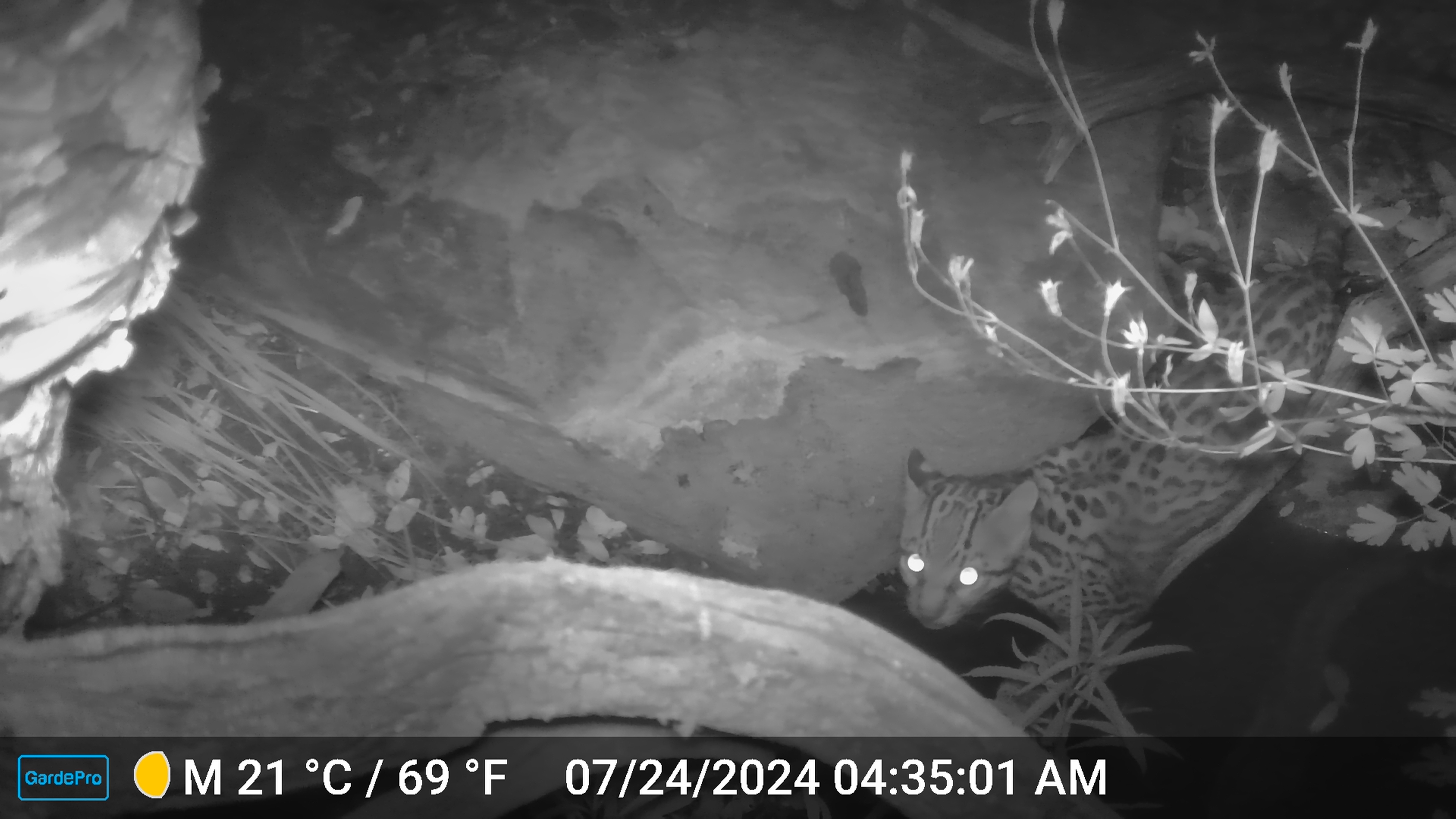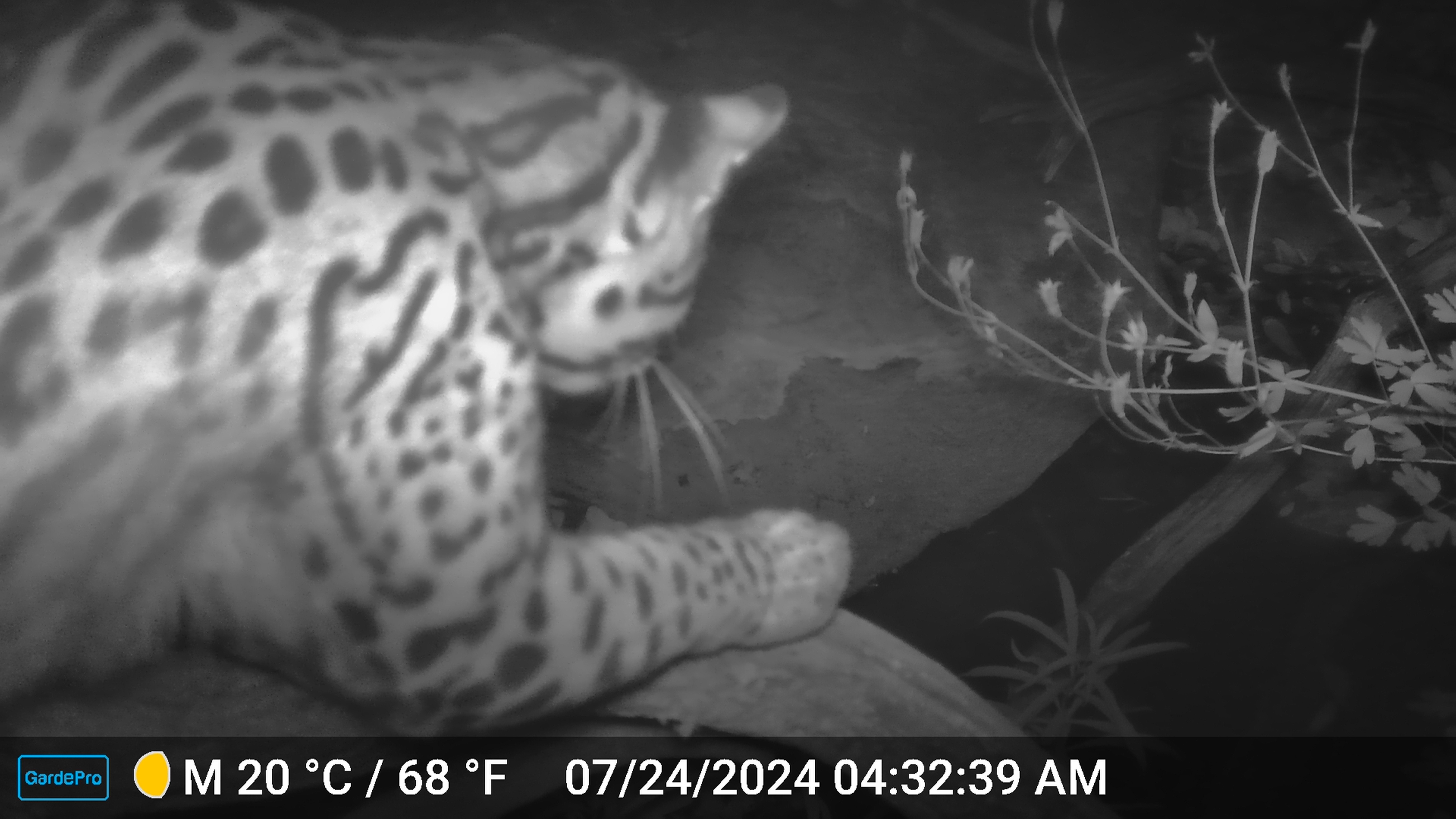Rarely-Seen Ocelot Captured on Trail Camera

Researchers “shouted with joy” when a rarely-seen ocelot was captured on a trail camera this summer.
Last week, the Center for Biological Diversity released stunning new trail camera footage of a rare wild ocelot slinking about in a Sky Island mountain range in Arizona.
The elusive and endangered species has not recently been detected in the Sky Island mountain range.
The footage was captured on July 24. For the safety of the cat, the Center for Biological Diversity is not specifying the location.

“I shouted with joy when I realized what I was seeing on the trail cam,” Russ McSpadden, a Southwest conservation advocate at the Center for Biological Diversity,says in a statement.
“This incredible footage shows us that ocelots belong in our Sky Islands, despite all the threats they face.
“These elegant, elusive, and fiercely resilient felines are an important part of what makes southern Arizona so special. Capturing footage of this cat in the wild gives me hope for their survival.”
‘A Chance to Celebrate These Incredible Creatures
Fewer than 100 ocelots are thought to remain in the U.S. The majority of the species reside in southern Texas.
However, Arizona is home to a small but crucial population that relies on the interconnected wildlands of the Sky Islands. However, fragmentation of the habitat due to human activity such as road building and mining is a serious threat to their survival.
Protected under the Endangered Species Act since 1982, ocelots are known for their striking, chain-like rosettes and spots, which allow researchers to identify individual animals, much like human fingerprints.
These distinctive markings also provide excellent camouflage in the dense forests and rugged terrain that make up their habitat.
After analysis and consultation with several experts, the Center for Biological Diversity confirmed that the ocelot in the trail camera footage in July was the same animal detected on June 12, 2024, in the Atascosa Highlands west of Nogales by researchers at the Phoenix Zoo. The ocelot traveled at least 30 miles between detections.
“Every ocelot and jaguar sighting is a chance to celebrate these incredible creatures and reflect on how we can help their safe return to the Southwestern U.S.,” McSpadden says.
“I hope this beautiful ocelot reminds us all of the critical work ahead to make sure these cats’ habitat remains unfragmented and protected for future generations.”
Image credits: All photos by Russ McSpadden/ Center for Biological Diversity.